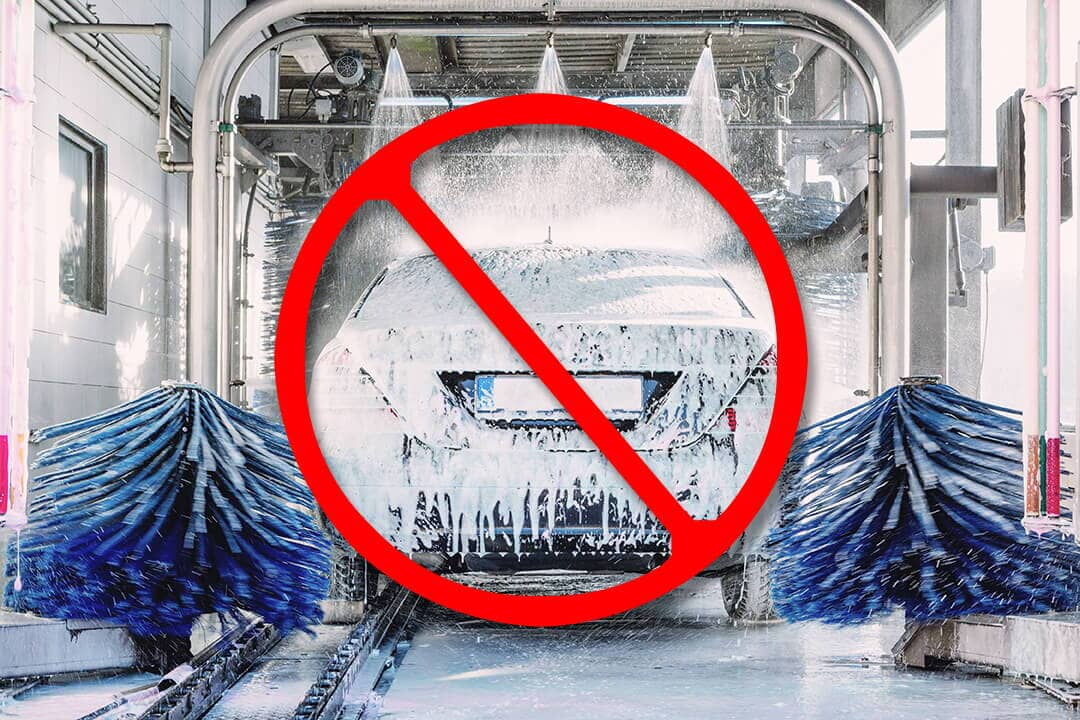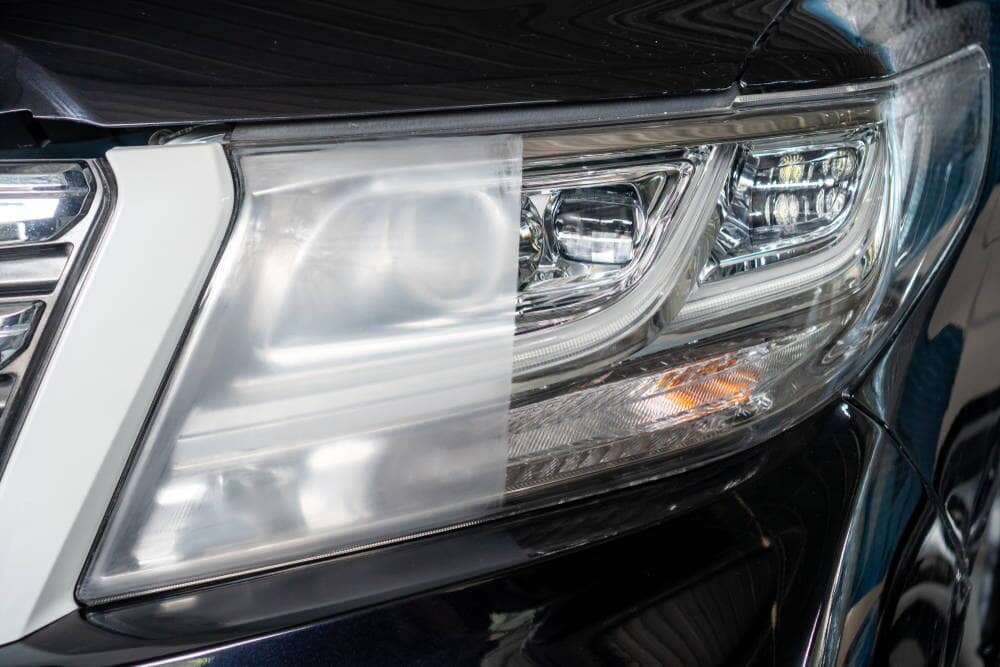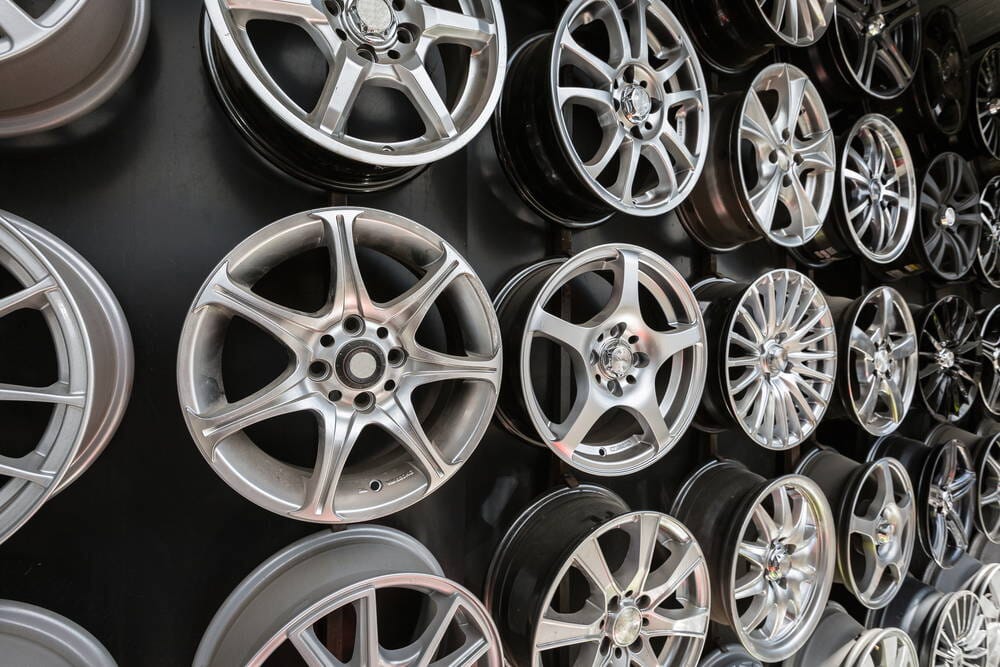You’ve put a lot of money into keeping your car looking and driving great. But how often are you washing it? And are you trusting someone else to do it or are you handling the task yourself?
While it might be easy to let your car go weeks, months, or even entire seasons between washes, this is definitely not something that most experts recommend. Instead, you should keep a fairly regular schedule to ensure your car looks the best it can at all times. We have to protect our car from all the inevitable features of man and nature such as road grime, tree sap, bird droppings, and acid rain.
Keep reading to learn how often you should wash your car and why where you live makes a difference in the schedule.
Hand Wash Vs. Car Wash
When it comes to washing your vehicle, you generally have two choices: you can use an automatic car wash or you can hand wash it yourself.
Many people choose the first option for the sake of convenience and time. If your schedule is packed, there’s a good chance you pay someone else to wash your car. You might even just pull into one of those fully automated beauties and hope for the best while swiping your credit card through an automated machine.
The problem with this is that these automated systems and their overly large washrag shammy cloth thing often cause harmful damage to your paint. This can be a real problem if you care about your car. Thus, it’s always better to take the extra time to wash your vehicle by hand whenever possible, even when it means fitting it into your overly crammed schedule.
How Often Should You Wash Your Car In The Summer?
Different seasons mean adopting a different regiment for washing your car. For example, in the summer, the UV rays are strongest. That’s when it’s important to suds up your sedan or cleanse your convertible about once every two weeks.
However, there are different rules for where you live and how you store your car. It might be a good idea to go once a week if you’re in an area of the country that’s dry and blisteringly hot, such as Arizona (AZ) or New Mexico (NM). However, if where you live is a little more humid or basically just has a larger population of bugs that can stick to the paint, you’ll want to wash more frequently.
You also have to think about hard water. Arizona is known to have hard water, that being water that has high mineral content. That leads to water spots. Besides that, the hot Arizona sun helps bake on any grime that lands on your vehicle, such as bird poop and bug guts. This can damage the car’s paint if not taken care of soon.
And what if you keep your car in the garage when you aren’t driving it? Well, you might not even need to go as often as bi-monthly. Parking your automobile under a cover or inside is a surefire way to keep from having to wash it as often.
How Often Should You Wash Your Car In The Winter (Fighting Road Salt)?
In contrast, it’s important to have a separate car wash schedule in the winter, and again, where you live plays a big role. If you think about this, it probably makes a lot of sense.
For example, if you live in an area like Minnesota, where heavy ice and snow are present, you’ll want to wash your car once a week at a minimum. The reason for this is road salt, which can cause damage to the paint and undercarriage of your car if it isn’t rinsed off periodically. A prime schedule for washing your vehicle during the winter months in this scenario is every ten days at least, but more likely every five to seven days if you commute frequently or there’s an exceptional amount of exposure to salt. You can be a little more lenient if your car has a strong undercoating.
And there’s more to it than that. You should only wash your car when the outdoor daytime temperature is above forty degrees. Any temperature lower than that can cause ice damage to your paint due to freezing, which isn’t something you want to have to deal with. Instead, just make sure you’re getting out there and handwashing it when you can and as often as feasible.
How Often Should You Wash Your Car Undercarriage?
This is one of those questions that you might not have really thought about, as most people don’t think about the undercarriage as something that really needs cleaning. The truth is that washing your car’s undercarriage is just as important as washing the outside, but it doesn’t need to be done as often.
According to experts, the ideal time to have the undercarriage of your vehicle washed is about once a season or four times a year. If you take your automobile off-roading, live out in the country, or otherwise end up in an area that’s muddy, you’ll want to increase this schedule to about six times a year. Likewise, if you encounter salt or brine on the roads in the winter, you’ll want to pay extra attention to the underside of your car during this time of year.
How Often Should You Wash Your Car To Prevent Rust?
Again, the ideal schedule to wash your car should be right around every two weeks. However, certain climates make it necessary to pay more attention to the exterior of your vehicle than in other regions across the country.
If you live in an area that’s either close to the saltwater of the coast or uses salt on the roads in winter, you need to be particularly concerned about rust. Thus, the optimum time frame to wash your car in this type of climate is around every ten days to two weeks. This will help remove the corrosive salt and help prevent rust spots or damage to your paint.
How Often Should You Wax Your Car?
Besides washing your car to protect your paint job and remove grime, you also need to be concerned about how often to wax your car. In most cases, this is a task you need to tackle about once every three months.
However, if your car is particularly special such as a classic restoration, you’re likely going to want to wax it a little more often. There are tons of waxes designed for monthly, weekly, and even daily use.
Waxing your car takes a little more effort than simply washing it, but the benefits will definitely outweigh the time you spend on the process.
Are Automatic Car Washes Safe On a Regular Basis?
The easy answer to this question is no. If you’ve ever pulled up to one and seen the list of various warnings and fine print about not being responsible if your car is damaged, it can be easy to see why so many people opt to hand wash instead.
The simple fact is this: these automatic car washes are not designed for every make and model of vehicle. They’re also unmanned and usually not maintained very well, which often leads to malfunctions and other issues.
Instead, take the time to wash your car the old-fashioned way to help eliminate problems, save your paint, and keep you from having to repair costly damage on your own.
Bonus: A Basic Car Wash For Beginners
If you’ve always trusted the local car wash machine for keeping your car clean, now is a good time to switch to hand washing. In fact, you might be surprised that it doesn’t take all that long to do it yourself and is sometimes easier than waiting in the lobby of the car wash.
Here’s a basic car wash guide to get you started and if followed correctly you will have a beautiful clean car.
Everything You Need For Your First Car Wash.
Pro Detailer Bundle by Torque Detail
"Two hours from start to finish applying only one coat. The products work great, paint felt like it did when I took it out of the dealer show room. Highly recommend Torque Detail Products"
(Raymond O. from New York)
Step #1: Gather Your Tools
Washing your car by hand doesn’t take a whole lot of effort, but you do need to make sure you have the right tools on hand. To wash your car safely, you’ll need:
- Torque Detail Decon Soap
- Detailing spray such as Mirror Shine or Ceramic Spray
- Garden hose
- Two clean buckets
- Microfiber wash mitt
- Microfiber towels
- Tire Shine (Optional. Only if you want to detail the wheels too)
Optionally, you might also want two grit guards to prevent your wash mitt from picking up dirt when you drop it into the bucket, as well as ammonia-free auto glass cleaner for your windows. We also suggest a car tire cleaner and soft wheel brush if possible.
Step #2: Start Washing
Ready to get started? Let’s go! If you’re using grit guards, make sure they’re at the bottom of your bucket. Fill the two buckets with water and add the car wash soap.
Put on the mitt, dunk it in the bucket, and start lathering up your car. You want to start at the top and work your way to the bottom, paying extra close attention to areas where bugs or grime have accumulated. You’ll also want to open the doors and clean the exterior sills, which can accumulate dust and grime pretty easily.
If you drive a truck or SUV and the vehicle is too tall to reach the top of the roof, carefully stand on the sill or get a small step ladder so you can reach everything. There are also extension rods you can buy that attach to a car wash mitt to make this an easy task.
Step #3: Rinse Away the Dirt and Grime
After getting the exterior of your vehicle nice and soapy, it’s time to start rinsing. Using the garden hose, start with the roof of the car and work your way down the vehicle. You should not see any suds anywhere after you’ve completed this process.
Make sure you also get your undercarriage if possible. This might take a little bending down and a hose nozzle, but it’s definitely an important part of hand washing your car yourself. If you’re using a hose attachment with a spray nozzle, use a gentle setting on the exterior paint of your car and something more powerful for the undercarriage portion.
Step #4: Give Your Wheels and Tires Some Love
Next, it’s time to get those wheels and tires nice and clean. If you’re using Tire Shine, spray it on and let it set for a few minutes before wiping it off with a damp cloth.
To clean the wheels, use a soft tire brush to remove any loose dirt. You may even make use of Mirror Shine or Ceramic Spray to shine them up.
During this process, you want to make sure that you don’t get any of this grime on the rest of your paint. Road grit and brake dust are pretty harsh and can easily scratch the rest of your car. That’s why it’s so important to leave this step until nearly the end of the car washing process.
Step #5: Repeat the Rinse
Once the wheels and tires are done, it’s time to rinse the whole vehicle again. Once more, start at the top and work your way down to the pavement. This will help ensure that any remaining soap, dirt, or debris flows off the vehicle.
If it’s a warm day, make sure to do this in quarterly sections combined with step number six. The reason for this is that the heat can cause water spots, which is something you really don’t want when ensuring your car looks great.
Step #6: Dry Thoroughly
Now that you’ve rinsed the car a second time, go ahead and grab one of your towels. Use this single towel to dry up the majority of the water from the surface of the paint. Pay extra attention to mirrors, the grill, and other areas that might hold water more easily.
Then, take the second towel and go back over the entire vehicle. The second towel will help dab up any of the excess moisture left behind from the first one. If you’re using an ammonia-free car glass cleaner on your windows, this is the time to apply it.
Step #7: Add a Finishing Spray
Finally, you want to add a finishing spray to your vehicle. Mirror Shine and Ceramic Spray are both designed to give you a wonderful finish long after application.
Start by shaking the bottle vigorously. Make sure the surface you’re spraying it on is cool and dry, then add a small amount of product. Use a microfiber towel to work the spray into the surface before buffing it in with a second towel.
Do this one section at a time while working from the top of the vehicle downward. Let it cure for six to twelve hours in a cool, dry area such as your garage.
Summary: So, How Often Should You Wash Your Car?
In short, it’s important to wash your car fairly often. Ten days to two weeks is the general maximum amount you should go between washes, but depending on where you live or the season, it might make sense to do it more often. Be sure to stay away from automatic car washes, which can create damage, and follow our provided steps for ensuring your hand wash experience goes well.
Take care of your vehicle and good luck. 😊







